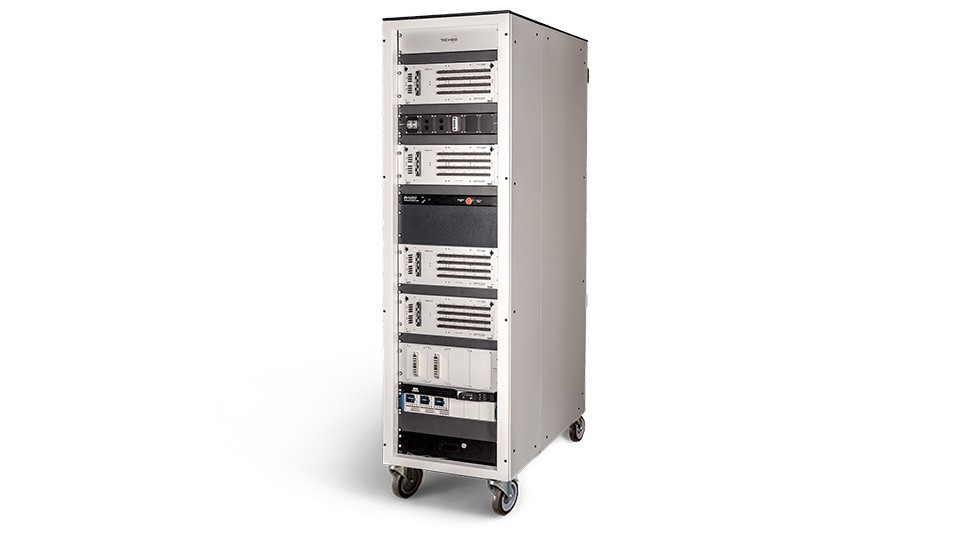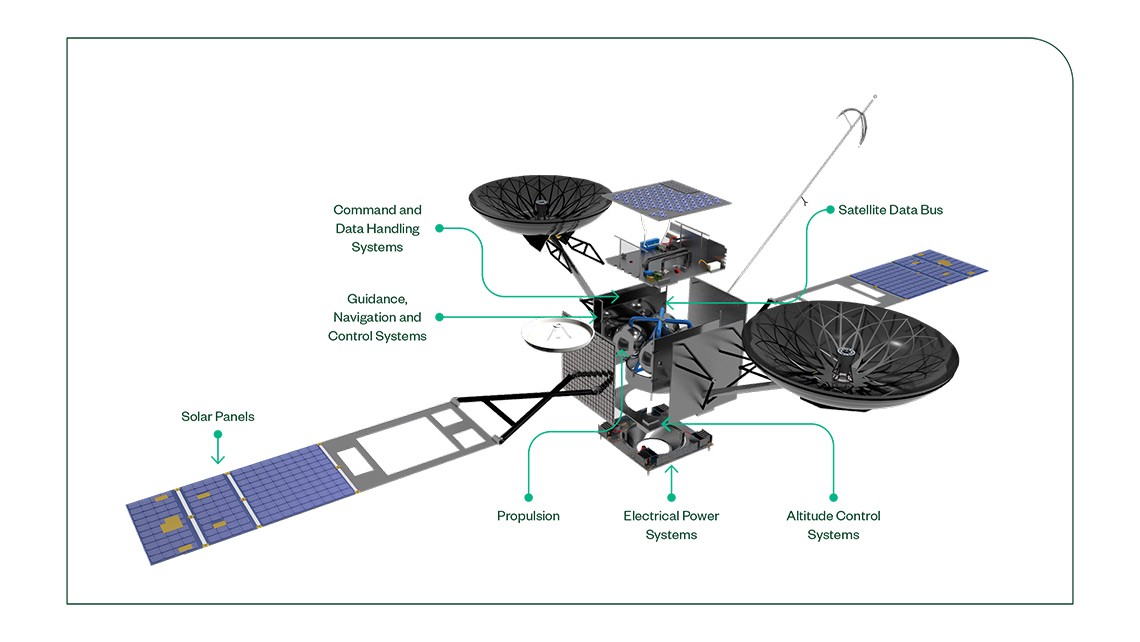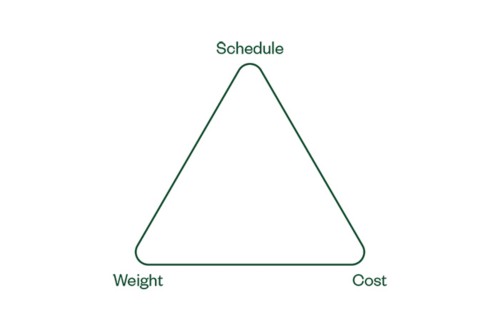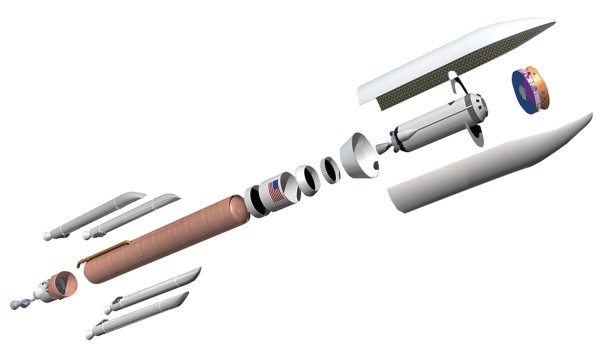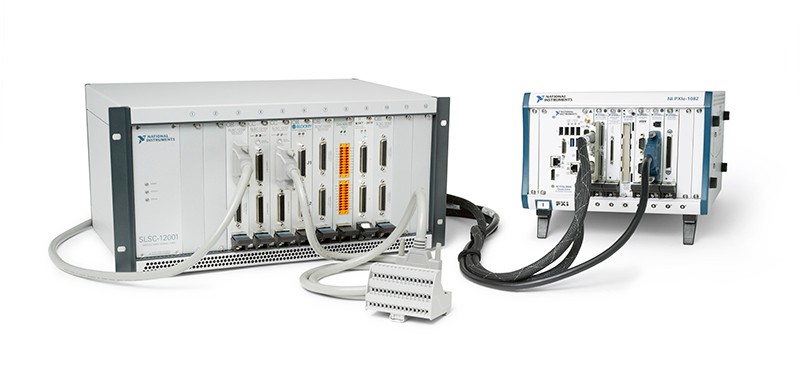Shorten Time to Market in Commercial Space
Overview
With shorter time-to-market schedules and tight budgets, the temptation to purchase or build a cheap test system for each space program is intensifying. A better solution is to invest in your ability to implement multiple tasks cost-effectively; for this, reconfigurability is key. You can achieve reconfigurability through a two-pronged test system strategy: (1) signal-based engineering that isolates signals so they can be implemented completely independently of each other and (2) modular hardware featuring standard commercial off-the-shelf (COTS) components that have been tested together.
Modular test systems more effectively accommodate the short schedules and tight budgets of modern small satellite and launch vehicles. You can use COTS components that are tested together with agile development processes to enable flexible systems that adapt to changing requirements, different life-cycle phases, or entirely new programs.
The future of aerospace won’t be built by following the status quo, and adapting test approaches to complement new agile development strategies will be necessary for the success of new space.
Contents
Introduction
Commercial space operations have been undergoing a transformation recently. Singular large satellites were formerly the industry norm, but the industry is shifting toward constellations of smaller satellites. Keeping these constellations viable requires a higher quantity of satellites with reduced build times and lower costs. Launch vehicles are seeing similar constraints from the pressure of more frequent and less costly launches.
Time to market has never been more important, but incumbent processes aren’t designed for the speed and adaptability necessary in the modern world.
When the demands of compressed timelines collide with traditional, waterfall-based processes that inherently require serialized decisions, there are only two possible results: programs go over budget or launch dates delayed. Neither is desirable and both present problems for the longevity and success of any player in the space market.
Addressing this problem requires a fundamental change in thinking rather than a fix for any individual program. It necessitates a shift in how decisions are made and how space products are developed. When a company is able to decouple its riskiest program decisions from its stable, known requirements, it advances the program even in the midst of technical uncertainty. A similar process can be applied to testing the ever-more complex systems in these vehicles.
These changes are a reality today. Companies that embrace a strategy using flexible, reconfigurable test systems developed through signal-based engineering save test time, which results in a shorter time to market and a competitive edge, even as the complexity of programs increases.
In this white paper, test industry leader Tech180 explores the current challenges of small satellite and launch vehicle programs and examines solutions featuring reconfigurability, agile processes, and signal-based engineering.
Figure 1: Representative System for Functional and Hardware-in-the-Loop Testing Small Satellite Electronics and Control Systems
Satellite Test Challenges
For all the changes in satellites, some things remain the same. They still comprise components to support the payload—solar panels, fuel, communication devices, and thrusters. And the I/O across satellites, especially small satellites, is largely similar from one program to the next.
Figure 2: Representative Satellite
However, the speed with which satellites are now expected to be built and the budget available to develop (and test) those satellites have changed. When you’re building a flat satellite lab, you’re not building a one-off product that will spend years in development and additional years in validation testing. You’re building a satellite to be reproduced dozens of times, as part of a larger constellation of satellites. And testing won’t be limited to validation; production test must be considered as well.
Representative Satellite Components and I/O
- Solar panels
- Battery
- Command and data-handling systems
- Electrical power systems
- Propulsion
- Altitude control systems
- Guidance, navigation, and control systems
- LVDS
- RS422
Monolithic test system design paired with product requirements closure results in waterfall processes and delays. Both satellite and launch vehicle programs are moving toward agile processes—design, fail, repeat. Companies with test system plans lacking agile processes are already behind.
It’s imperative in the modern space market to move to agile processes for all phases of production, from design to build to validation testing.
“Commercial aerospace cannot operate the old way. The latency is too high for the new space market.”
– Greg Sussman, Business Development Manager, Tech180
Launch Vehicle Test Challenges
Gone are the days of “schedule, weight, or cost. Pick two.” Now, you have to be hitting your marks on all three. It’s all about simplifying the design to shorten time to market within budget.
As with satellites, launch vehicle programs incorporate consistent components. The I/O isn’t exactly the same from one program to the next, but the options are finite. The substantial overlap is enough to allow standardizing on common signal types, which is a crucial step for accelerating test coverage and reducing time to market.
Figure 3: Program Choice Triangle
Figure 4: Representative Launch Vehicle Components
Representative Launch Vehicle I/O
- Solenoid loads
- Ethernet
- LVDT
- Servo motors
- Input current 4-20mA
- Analog I/O
- Discrete I/O
- CAN bus
- Thermocouple
With launch vehicles, gaining market share through faster go-to-launch times is critical. Schedules slipping to the right leave space for others to fill the gap in a fiercely competitive market.
Control the schedule, simplify designs, and get to market first.
“Schedule is king. If you’re not launching, they are.”
– Chris Bakker, CEO, Tech 180
Shorten Go-to-Market Times
The key to accelerating go-to-market times in the commercial space industry is design space reduction. Standardization and modularity made possible through signal-based engineering pave the way for reconfigurable systems that shorten time to market. The following section examines how each of these strategies depends on the other for maximum efficiency.
Reconfigurability
Reconfigurable test systems are a core piece of a shorter time-to-market strategy. Shifting requirements traditionally have presented problems for agile decision making in the test environment. Any change in requirements after the test system has been designed creates delays and rework and pushes schedules to the right. Reconfigurability solves this problem by allowing you to easily change your test system as requirements change. You can achieve this through modular system design using standardized components and a signal-based engineering methodology, which are discussed later in this paper.
Another key component of a robust testing strategy is reconfigurability for production at a larger scale than in the past. Test systems that can be repurposed for another phase of life-cycle test offer benefits not available in traditional single life-cycle phase test systems. Though companies formerly didn’t need a production strategy when developing satellites in small quantities, they very much do need that strategy today for quantity 100.
Repurposable test systems allow you to move flexibly from validation testing to production testing with minimal time and effort. Life-cycle phase reconfigurability isn’t the only benefit; test systems can be used for the next program through reconfiguration as well.
Modular System Design Using Standard Components
As noted above, reconfigurability relies on a strategy of modular system design using standard, off-the-shelf components that have been tested together for compatibility.
When creating a reconfigurable test system, a crucial component is standardizing on commercial off-the-shelf components.
NI’s PXI and Switch Load and Signal Conditioning (SLSC) platforms provide a suite of COTS components that you can configure into systems to ensure the reconfigurability necessary for a flexible modern test strategy. Tech180 uses these platforms as the basis for our systems, enabling test system creation from suites of COTS components that have all been tested together for compatibility.
Figure 5: NI PXI and SLSC Chassis
The Role of Signal-Based Engineering
Signal-based engineering is the most important component of a faster, more modular test system approach. It allows designing for individual signals in a way that completely separates them, thus isolating the implementation of one signal from another. Modular hardware and signal-based engineering work in tandem to ensure that test system design need not be serialized. Instead, you can individually design, build, and validate portions of the system as requirements evolve. If something changes, you can reconfigure and adjust a portion without impacting the rest of your system.
Costs and Timelines
The costs and time for a reconfigurable test system vary based on the complexity and quantity of signals you need to test, but companies like Tech180 can provide systems in around 12 weeks. Full turnkey systems that can be reconfigured for use across life-cycle phases or programs are available for around $400,000 USD. They provide the flexibility to absorb changing requirements while still being ready on the scheduled test date. Tech180 offers test solutions ranging from basic platform configurations to full turnkey systems to keep you on schedule and on budget.
About Tech180
Tech180 is providing the aerospace industry with reconfigurable test systems that reduce the burdens of complexity, allowing you to focus less on test equipment and more on innovating for the future. Modular test systems reduce the time and effort needed to translate product requirements into a test system specification, resulting in high-quality systems that are available sooner. Whether it’s advanced aircraft, spacecraft, or vehicles that haven’t even been imagined yet, you can test not only the products you’re building now but also the ones you’ll develop in the future.
